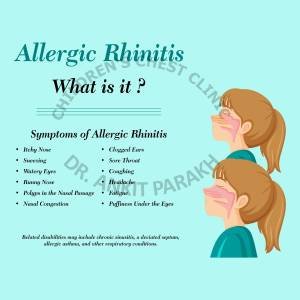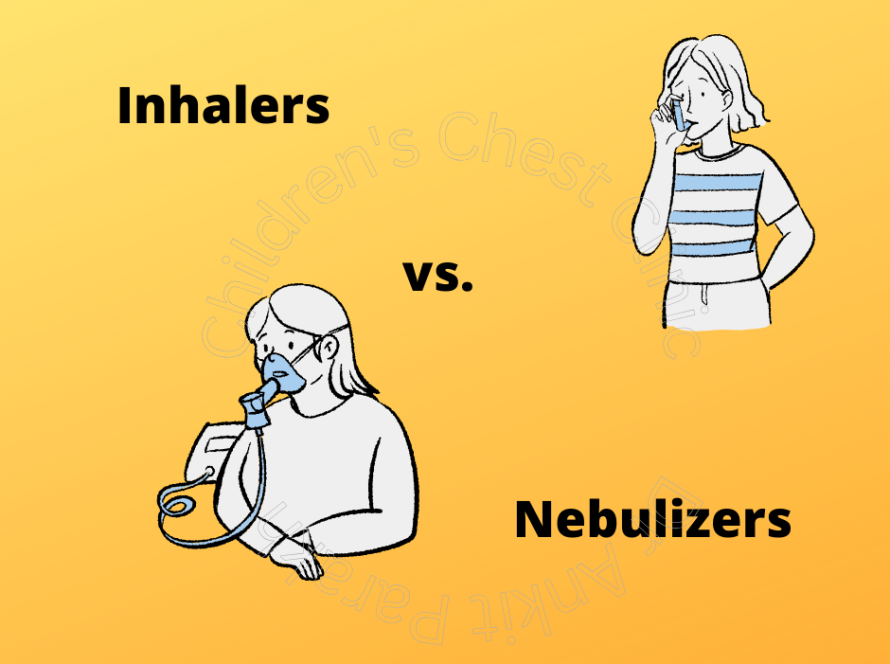Allergic rhinitis or nasal allergy is the most common allergic problem seen throughout the globe. Approximately 30% of the population including children seems to be affected with allergic rhinitis or nasal allergy. In this article we would discuss the symptoms, diagnosis and treatment of allergic rhinitis or nasal allergy.
What are the symptoms of allergic rhinitis?
Common symptoms of allergic rhinitis or nasal allergy are very similar to a cold. The common symptoms are sneezing, a runny or blocked nose and itching in the nose. Many children with allergic rhinitis or nasal allergy have mucus trickling down their throat leading to a post nasal drip and chronic cough.
The symptoms of allergic rhinitis or nasal allergy could be only during a particular season or may be present throughout the year. The severity of symptoms could also be variable ranging from mild to moderate to severe. Children with severe symptoms which are throughout the year have a significant impact on their quality of life. Allergic rhinitis or nasal allergy can disturb a child’s daily routine, school and sleep. Many children are unable to concentrate and study in their class due to troublesome symptoms. This can have an impact on their school performance.

What are the other allergic conditions associated with allergic rhinitis?
Other common conditions associated with allergic rhinitis or nasal allergy in children could be related to allergy or associated upper airway issues. Common allergies associated with allergic rhinitis or nasal allergy in children are allergic conjunctivitis or eye allergy, food allergies, atopic dermatitis or eczema and asthma. Common upper airway issues associated with allergic rhinitis or nasal allergy are sinusitis, enlargement of adenoids, serous otitis media (also known as glue ear). These problems can lead to additional symptoms which impacts the child. These associated conditions need to be diagnosed and treated properly.
What are the common causes of allergic rhinitis in children?
Allergic rhinitis or nasal allergy is caused by aero-allergens which are present in the child’s environment. These could be indoor allergens or outdoor allergens. The common indoor aero-allergens are dust mites, pet dander (cat & dog), indoor molds and cockroaches. Common outdoor allergens are pollens and outdoor molds. Identification of the cause of allergic rhinitis or nasal allergy requires an allergy test. This can be done either in the form of a skin prick test or a blood allergy test (ImmunoCap).
How do we treat allergic rhinitis in children?
Treatment of allergic rhinitis or nasal allergy depends on the severity of symptoms and whether the symptoms are seasonal or throughout the year. Common medicines used are oral non-sedating antihistamines (like cetrizine, levo-cetrizine, bilastine, fexofenadine), intranasal sprays and montelukast. Intra-Nasal sprays are most effective in treatment of allergic rhinitis or nasal allergy. These contain local corticosteroids (fluticasone, mometasone) which are quite effective and have no significant adverse effects. Some children might need a combination of the above medicines for improvement in symptoms. Children with a poor response to treatment should be considered for allergen immunotherapy. Allergen immunotherapy could be either in the form of sublingual or subcutaneous. Allergen immunotherapy leads to improvement in symptoms and reduction in medications in the long term.
In case your child is having allergic rhinitis or nasal allergy you need to get in touch with a child pulmonologist or allergist for proper diagnosis, allergy tests and treatment.






